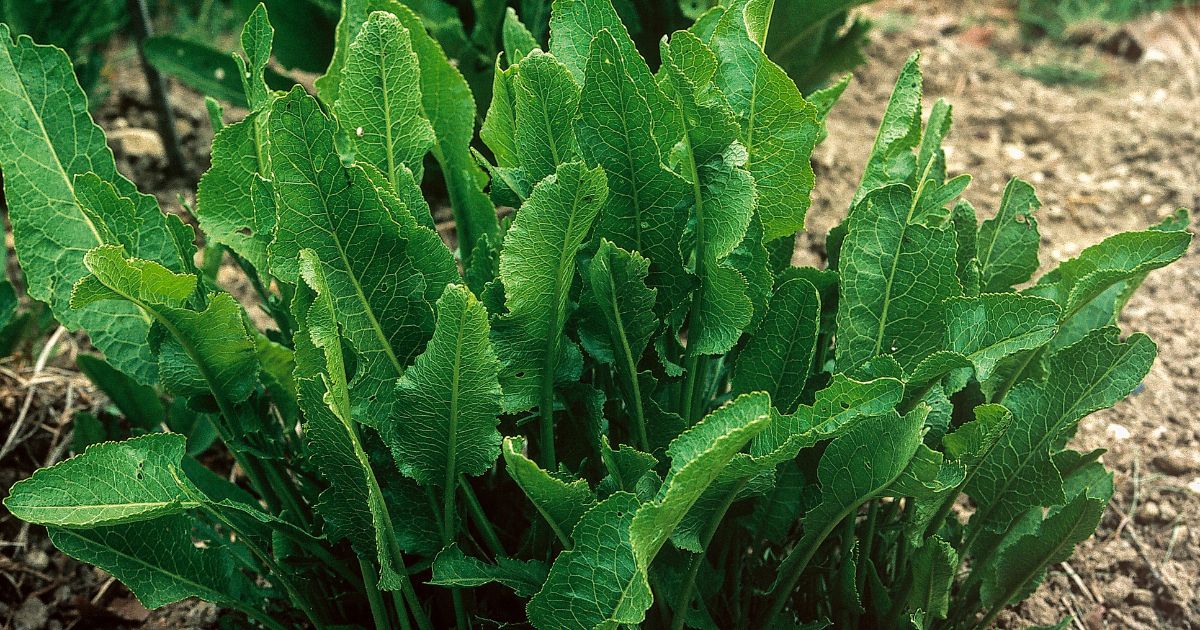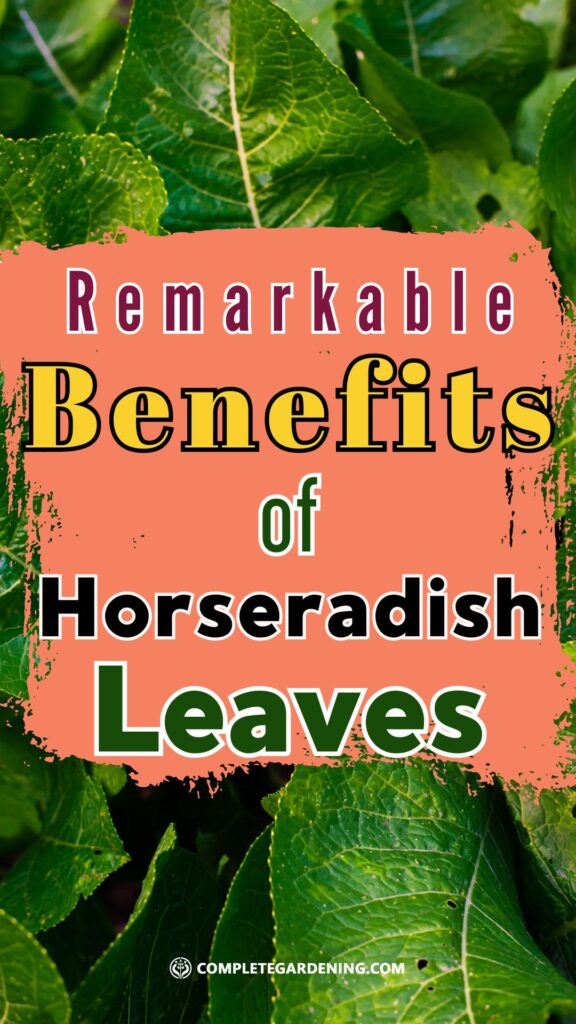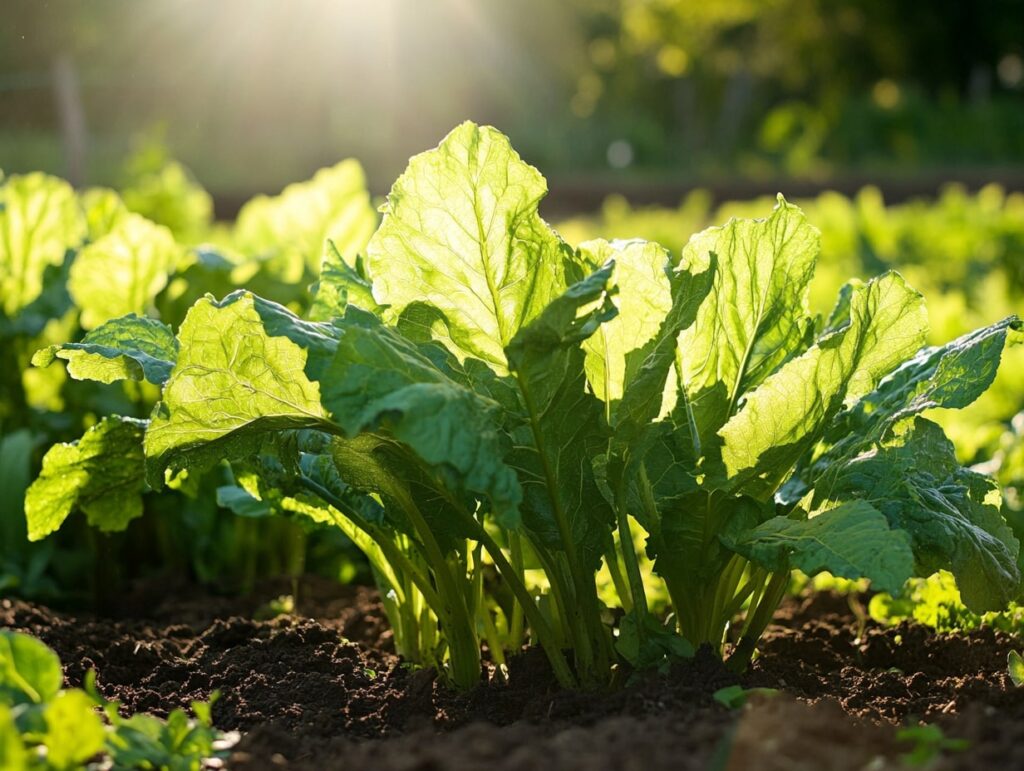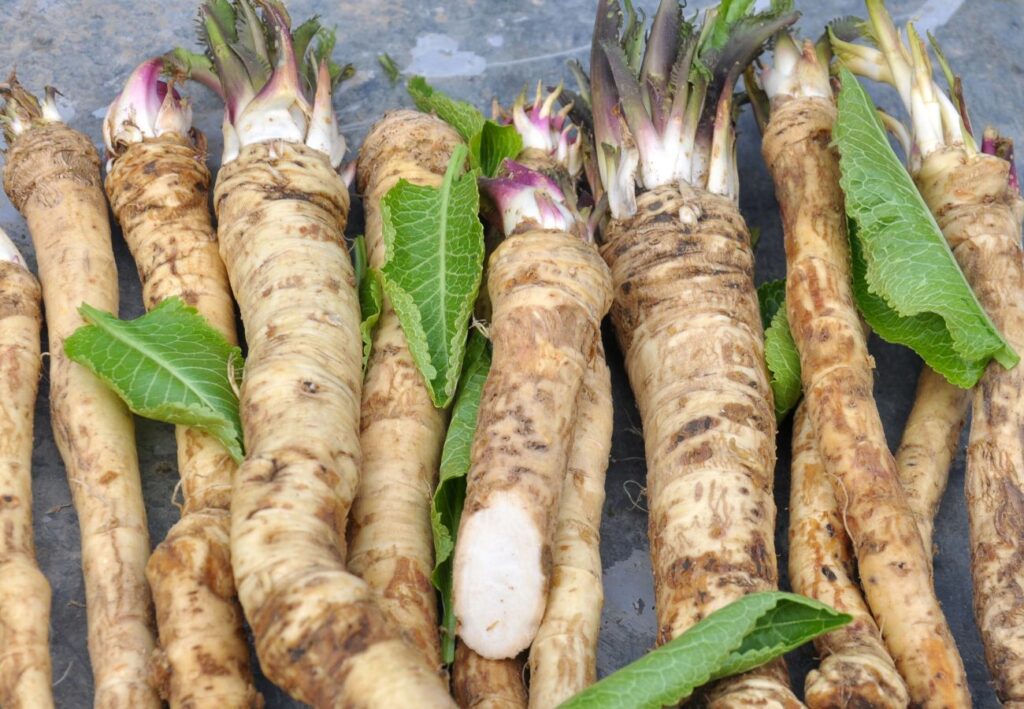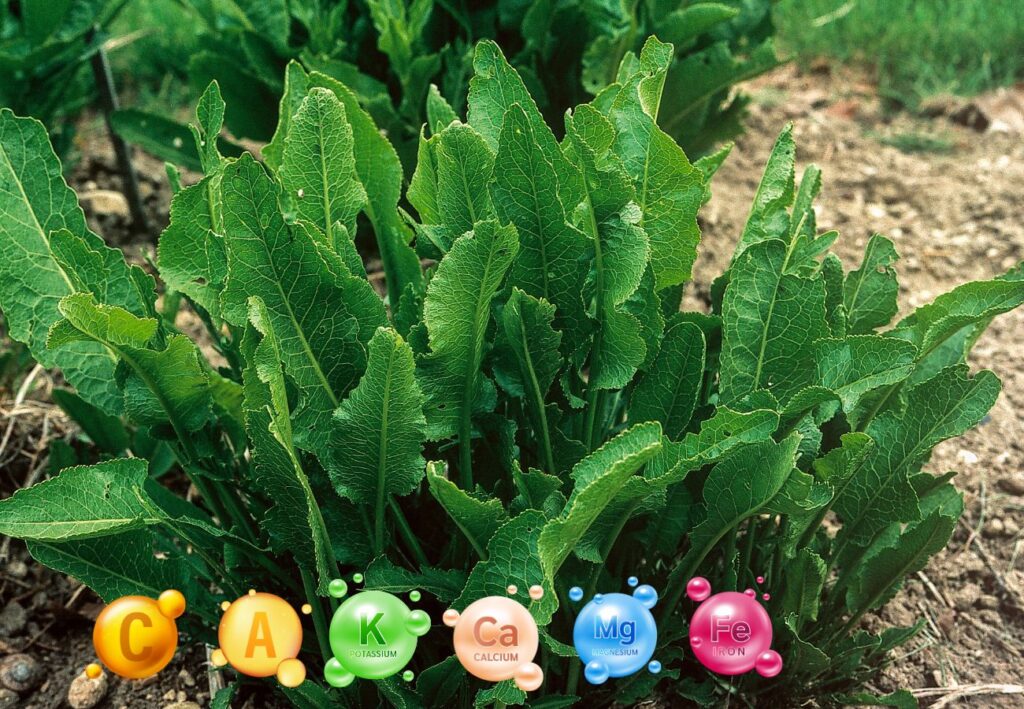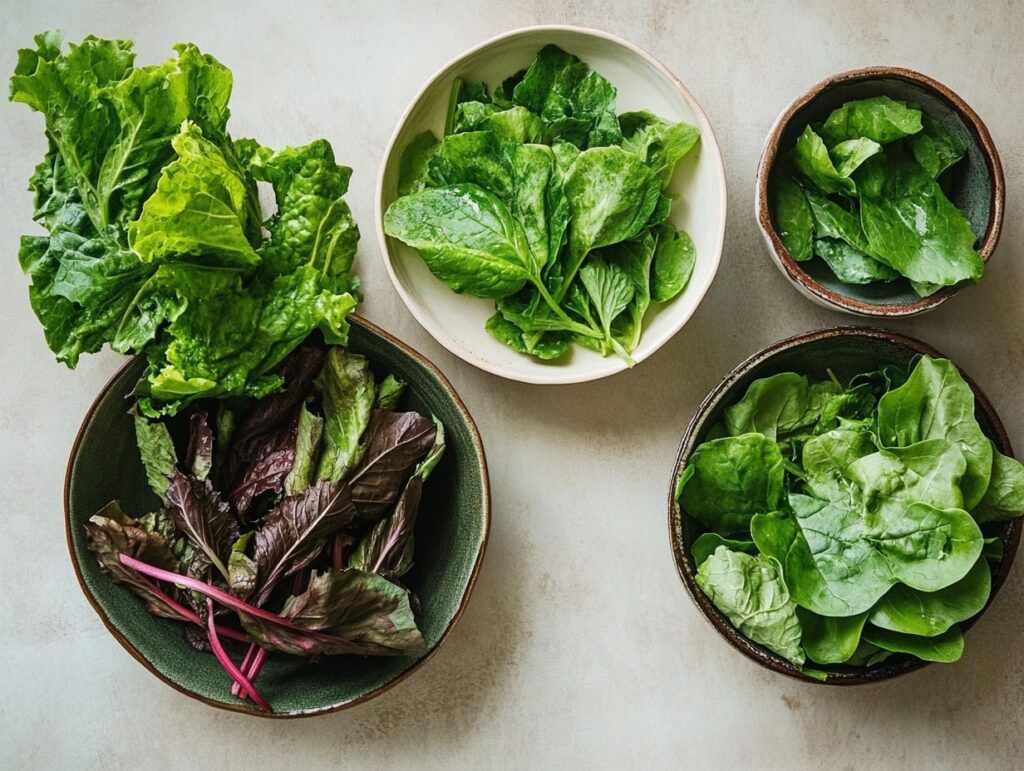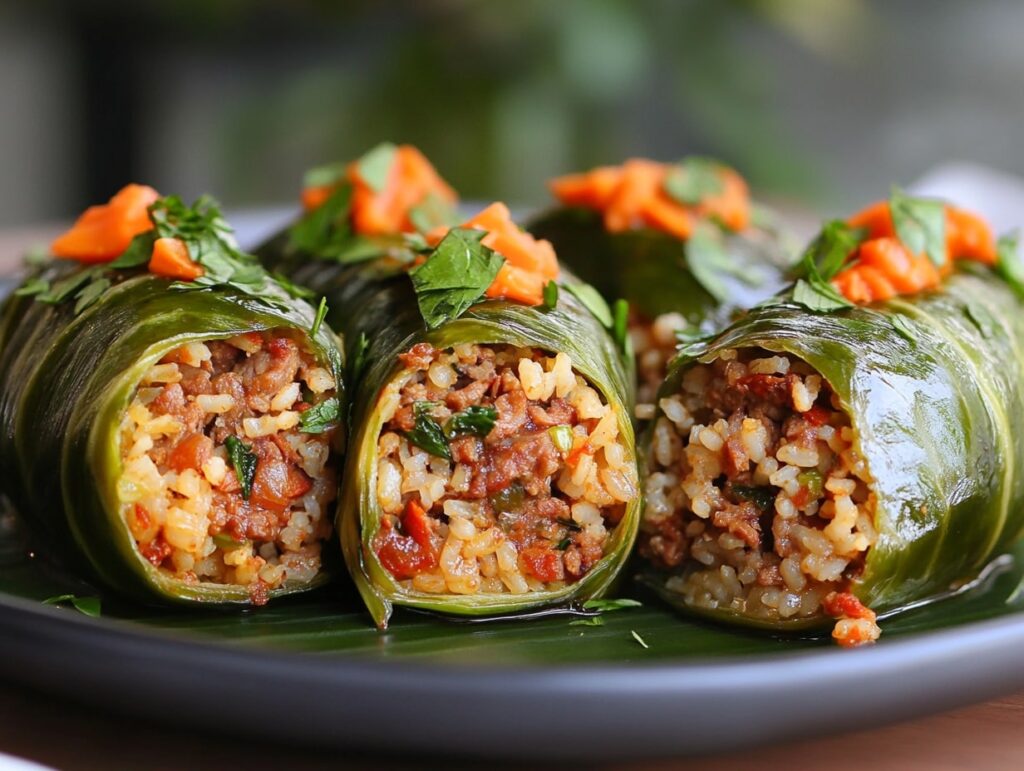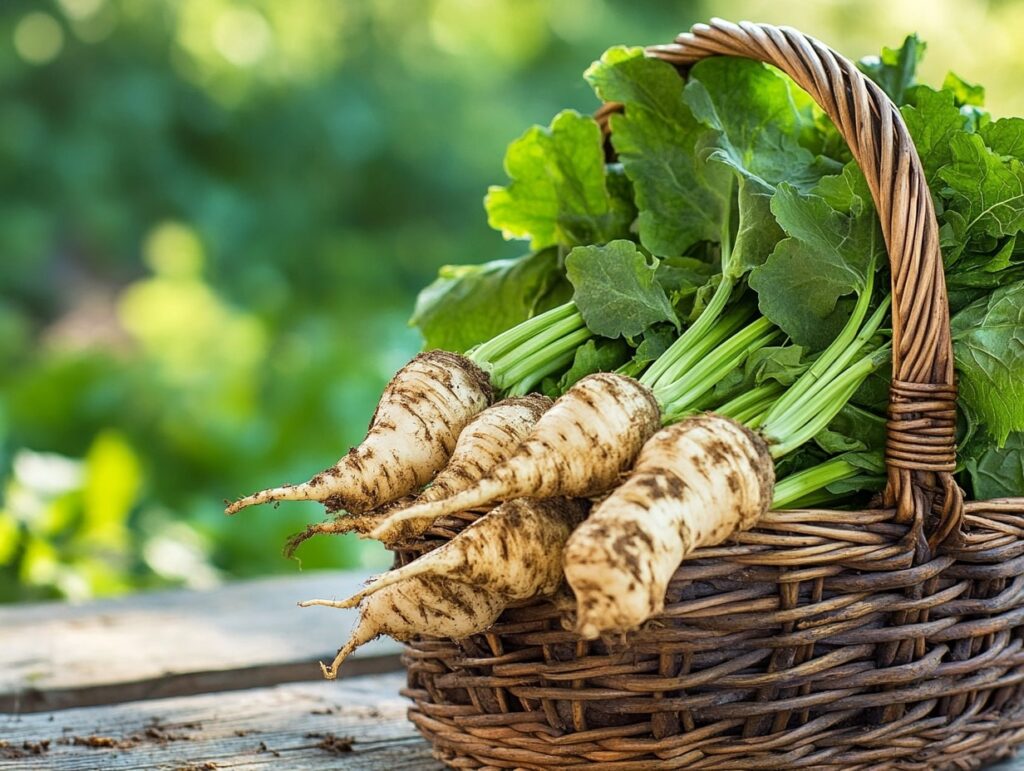Have you ever wondered about the hidden gems in your garden? Horseradish leaves might not be the first thing that comes to mind, but they are packed with surprising benefits that you won’t want to miss out on.
From boosting your health to enhancing your culinary creations, these unassuming greens offer a wealth of advantages.
Imagine adding a new, nutritious twist to your meals with just a handful of fresh horseradish leaves. They’re not only full of vitamins and minerals but also provide a unique flavor that can transform any dish.
Plus, they’re easy to grow and incorporate into your daily routine.
Don’t let these vibrant leaves go to waste. By diving into the positive aspects of horseradish leaves, you’ll discover simple yet effective ways to enhance your lifestyle.
So grab a bunch the next time you’re in your garden and get ready to explore the remarkable benefits they have to offer!
Understanding Horseradish Leaves
Horseradish leaves, though often overshadowed by the root, offer their own unique attributes. They possess distinct botanical characteristics and can differ significantly from the more commonly used root in culinary and medicinal contexts.
Botanical Profile
Horseradish leaves come from the perennial plant Armoracia rusticana. These leaves are typically large, dark green, and have a slightly toothed edge. They can grow up to 2 feet in length, providing a lush, robust appearance in the garden.
The leaves contain vitamins A and C, as well as minerals like calcium and potassium. They also have antioxidant properties. The leaves emit a strong aroma when crushed, indicative of glucosinolates – compounds known for their sharp flavor and health benefits.
Comparison to Horseradish Root
Root and leaves serve different purposes. While the root is renowned for its pungent, spicy profile and use as a condiment, the leaves bring a milder, mustard-like flavor, making them versatile in salads, pestos, and cooked dishes.
Nutritionally, the root is high in glucosinolates, contributing to its strong taste and health benefits. The leaves, comparatively, offer a broader range of vitamins and minerals.
Both parts of the plant provide health benefits, but the leaves are often praised for their richer vitamin content.
Nutritional Value
Horseradish leaves are packed with essential nutrients that can boost your health in various ways. They are particularly rich in vitamins, minerals, and antioxidants.
Vitamins and Minerals
Horseradish leaves contain high levels of vitamin C, which boosts your immune system and skin health. They are also a good source of vitamin A, important for vision and cell growth. This leafy green is rich in potassium, which helps regulate blood pressure.
Additionally, it contains calcium, magnesium, and iron, which are crucial for bone health, muscle function, and blood health, respectively.
Antioxidant Content
Antioxidants in horseradish leaves, like flavonoids and phenolic acids, help protect your body from free radicals. These antioxidants play a role in reducing inflammation and lowering the risk of chronic diseases.
Eating foods rich in antioxidants can improve your overall health and assist in protecting your cells from damage.
Horseradish leaves stand out as an excellent source of nutrients, offering multiple health benefits to incorporate into your diet.
Health Benefits
Horseradish leaves bring a variety of health advantages. They aid digestion, strengthen your immune system, and help fight inflammation.
Supporting Digestive Health
Horseradish leaves contain dietary fiber, which helps regulate bowel movements and prevent constipation. Fiber acts as a natural cleanser for your digestive tract, promoting a healthy gut environment.
Additionally, these leaves have compounds that stimulate the production of digestive enzymes and stomach acids, aiding in the breakdown of food.
Regular consumption can lead to improved nutrient absorption. Antioxidants present in the leaves protect your stomach lining from damage. Adding fresh or cooked horseradish leaves to your meals can be a simple and effective way to support your digestive system.
Boosting Immunity
Rich in Vitamin C, horseradish leaves play a crucial role in boosting your immune system. Vitamin C supports the production of white blood cells, which are vital for fighting off infections.
High levels of antioxidants in the leaves help combat free radicals, minimizing oxidative stress on your cells.
Including these leaves in your diet can also provide a steady supply of essential minerals like potassium, zinc, and iron, which further contribute to immune health. You may use the leaves in salads, soups, or as a garnish to add both flavor and nutritional value.
Anti-Inflammatory Properties
Horseradish leaves are known for their anti-inflammatory properties. They contain compounds like sinigrin and glucosinolates, which have been shown to reduce inflammation in the body.
These compounds can help relieve symptoms of arthritis and other inflammatory conditions.
Incorporating horseradish leaves into your diet may help lower the need for over-the-counter anti-inflammatory medications. They can be consumed in various forms such as raw, cooked, or even as a tea infusion to harness these benefits.
Culinary Uses
Horseradish leaves can add a unique flavor and texture to various dishes. They are often used in recipes that benefit from their distinctive taste and can be a substitute for more common greens.
Incorporating into Recipes
Horseradish leaves are versatile in the kitchen. You can use them fresh in salads, adding a sharp, peppery note. They also work well in cooked dishes such as soups and stews, where their pungent flavor mellows and blends beautifully.
Try stuffing horseradish leaves with rice or meat mixtures, similar to grape leaves. Their sturdy texture makes them suitable for wrapping and baking. You can also chop them finely and mix them into sauces or spreads for an interesting twist.
Flavor Profile
The flavor of horseradish leaves is bold and peppery, with a slight bitterness. This makes them a great addition to dishes where you want to add a bit of a kick. The intensity can vary, so it’s a good idea to taste a small piece before using to gauge how much to add.
When cooked, their flavor softens, becoming more earthy and subtle. They can be compared to mustard greens or arugula. Whether used fresh or cooked, horseradish leaves bring a distinctive taste that can elevate your culinary creations.
Growing and Harvesting Tips
Horseradish leaves thrive best in rich, well-drained soil. Make sure to plant them in an area that gets full sunlight. If you live in a colder region, ensure that the soil temperature is consistently above 40°F for optimal growth.
Keep the soil consistently moist, but avoid waterlogging. A good rule of thumb is to water the plants deeply once a week. Mulching around the plants helps in maintaining soil moisture and controlling weeds effectively.
Fertilize the plants with a balanced fertilizer. A 10-10-10 formula works great. Apply it in early spring and mid-summer for best results. Always follow the manufacturer’s instructions to avoid over-fertilizing.
When it comes to harvesting, the leaves can be picked throughout the growing season. Use sharp scissors or garden shears to cut the leaves off at the stem. Make sure to leave enough foliage to keep the plants healthy.
For optimal flavor and tenderness, harvest the younger leaves. Store the leaves in a cool, dry place or refrigerate them in a plastic bag to extend their freshness.
Monitor plants for pests like aphids and caterpillars. Organic solutions, such as neem oil, can be effective. Regularly check your plants to ensure they stay healthy and vibrant.
Horseradish leaves, often overlooked in favor of the more popular root, are a treasure trove of nutritional and culinary benefits waiting to be discovered.
From their impressive vitamin and mineral content to their unique, peppery flavor, these leaves are a versatile addition to both your garden and kitchen.
By incorporating horseradish leaves into your diet, you can enhance your meals with a burst of flavor while also reaping significant health benefits, including improved digestion, boosted immunity, and reduced inflammation.
As you cultivate these vibrant greens in your garden, remember that their uses extend far beyond mere garnish. Whether you’re adding them to salads, soups, or as a wrap for savory fillings, horseradish leaves offer a delightful way to elevate your dishes.
With the growing and harvesting tips provided, you’ll be well on your way to making the most of this underappreciated garden gem.
So next time you’re in your garden, don’t overlook these leafy greens—embrace the full potential of horseradish leaves and enjoy the myriad benefits they bring to your table and your health.
